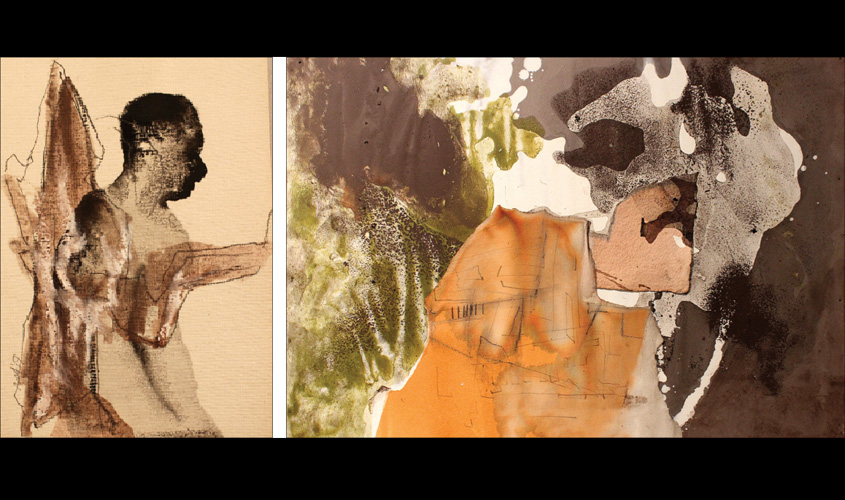Colours like green, brown, rust and black dominate his mixed-media installations in the show. The artist has used multiple items and created various objects we often see around an excavation site. One of the artworks represents an unfinished building plan with layers of racks. The racks seem painted with a fresh coat of green. The installation represents the process of construction work. Another set of installation showcases a man looking at a sculpture of a woman dug out from the ground.
“I have been always interested in archaeology,” says Das. “The inspiration for this exhibition has come from the Harappan civilisation because it is one of the ancient civilisations of the world. The civilisation touches upon a lot of the urbanisation concepts, of town planning, of the development of the human world. I think when we talk about modernism; we should not forget the topic of archaeology there.”
Definite forms and figures start emerging in Das’ installations if one pays a closer look. In one of the artworks, there appears a lady reclined on a sofa; and then in another an animal galloping through the woods. The artist as a child always used to collect different images, random cut-outs from newspaper and magazines, and used to draw on those, creating something entirely new. In this way, the idea of using excavation has always stayed with the artist, and it became the language of his art.
He says, “I still often look at my own work, I study those and add a layer or two. I think what was missing, what could have been added and so on. In this way I like to revisit my own work. I look at the Vedas and Upanishads, which also talk about the concepts of how one should look at their own self from the past and purify oneself in order to connect with your present self.”
In one set of drawings, the artist has revisited his own works from the past and created new figures on them, making an entire fresh series of artworks. Here the idea of Das was to look at what the fossil—here the old drawings could be formed into what. He says, “I wanted to play with the idea that what could be now done with the old works. I wanted to bring the past with the present.”
The journals by the Archaelogical Survey of India, and many books authored by the acclaimed archaeologist John Marshall also served as Das’ inspirations. He says, “The pictures published adjacent to the text and maps in those books created a panoramic view in my head of the places I couldn’t visit due to political tensions. Here, it is important to mention that I have used reference in my work. I believe every imagination needs a reference. One can interpret it in one’s own language but reference is a must.”
The artworks displayed here are made by the artist over the past ten years. All the pieces here are untitled. He wanted to present the artworks as excavated objects would be—without a name or date.
The artworks displayed here are made by the artist over the past ten years. All the pieces here are untitled. He wanted to present the artworks as excavated objects would be—without a name or date.
In his abstract works, the artist has presented an allegorical narrative where the concept of his personal memory and excavation play as main characters. He says, “Through the current body of works, I use my own artistic vantage point to intervene and attempt to put forward a new language for the archival material still in isolation. My perspective is not one of argumentation based on facts and truth, but is a psychological interpretation of archival material using an artistic vocabulary.”

Over the last decade Das has closely worked, examined, and interpreted the idea of “personal archaeology/personal archives”, where time plays the greatest challenger. As a visual interpreter, Das has continuously expressed a conscious need of archiving not only in India but elsewhere too. But the region of South Asia, also his home, constantly pulls him towards itself. He says, “This land has a lot of historical significance and due to a number of events which took place here it catches my attention.”
Samit’s art constantly takes the viewer away from the conventional historical narratives and opens up a channel for the imagination. He says, “The powerful language of words and historical content can overpower and create a distance between artistic expressions and strict theory-based practice.” And the artist successfully bridges the gap.
The show is on view at Delhi’s Gallery Espace till 7 October

